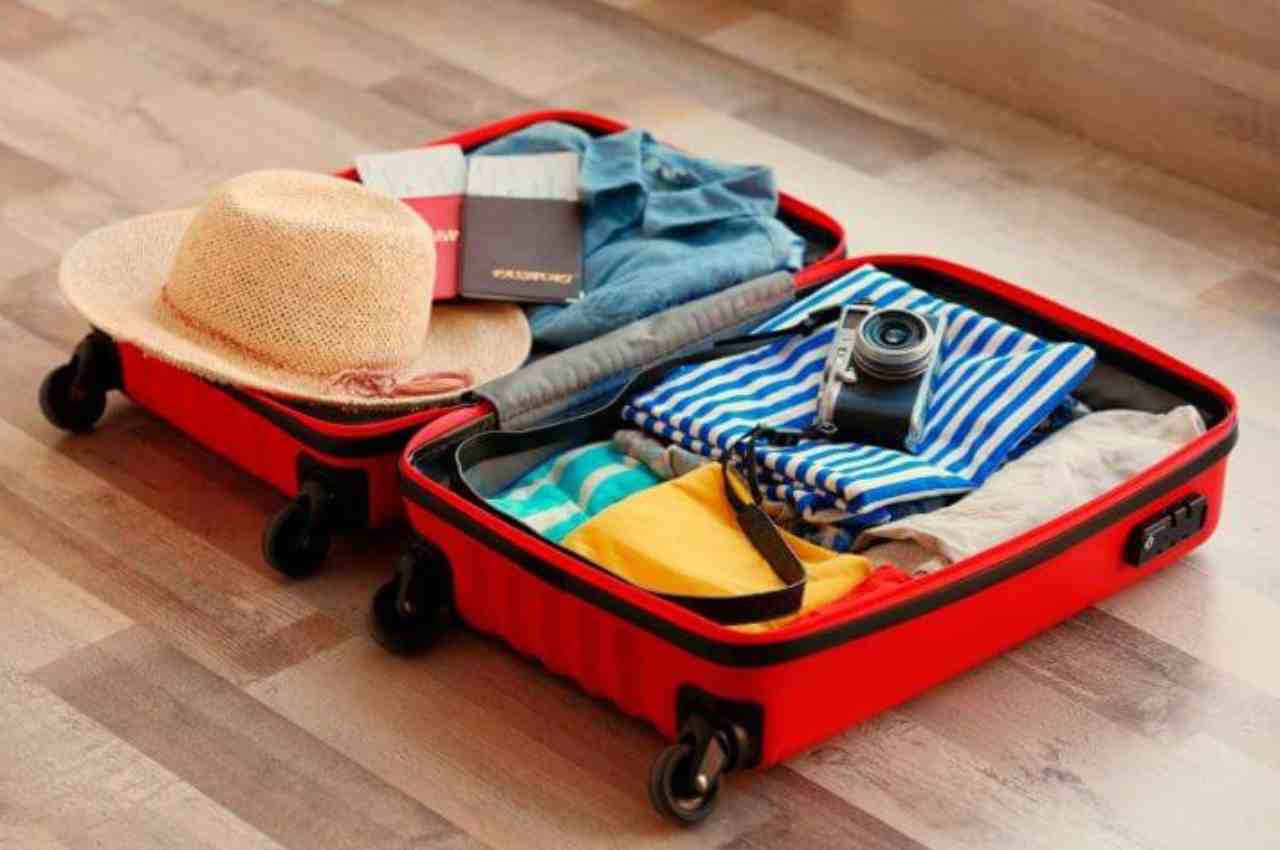Summer is the most anticipated season for Europeans and tourists who want to enjoy the European holidays, beautiful beaches, incredible tourist spots, and longer days. If you have a trip planned to the continent, check out this article on what to pack for a European summer.
Packing List for a European Summer
You need to pack documents for entering Europe, personal items, clothes, shoes, and everything you’ll need during your trip.
Documents
In your carry-on bag, organize all necessary documentation for your trip to Europe:
- Valid Passport: A passport is mandatory to enter Europe. It must be valid for at least three months after your return date. For example, if you return from Europe on July 10, 2024, your passport should be valid until at least October 10, 2024. You can apply for a Brazilian passport on the Federal Police website, which provides step-by-step instructions.
- Proof of Accommodation or Invitation Letter: You must present at immigration a proof of accommodation reservation, such as a Booking or Airbnb confirmation, or an invitation letter if you will be staying with someone legally residing in Europe. This proof shows immigration officers that you do not intend to live illegally in Europe.
- Return Ticket: Non-European citizens must present a return ticket to Brazil or a country outside the Schengen Area. This ensures immigration officers don’t mistake you for an illegal immigrant. Without this proof, you might be denied boarding.
- Financial Proof: You must also prove that you have the financial means to travel to Europe. The required amount varies by country, but on average, you must show you have at least 80 euros per day of travel. Check the official website of the country you are visiting for the exact amount. We recommend bringing extra funds just in case. Financial proof can be in the form of cash, a copy of your credit card limit, or an international debit card.
- Travel Insurance: You must carry a travel insurance policy for Europe, with a minimum coverage of 30,000 euros for medical and hospital expenses. Visit Skaii Seguros to find the best travel insurance options. Skaii Seguros is recommended by Yellowling for quick and economical travel insurance from reliable providers.
Personal Items
Both documents and personal items should be in your carry-on bag, ensuring easy access and better security compared to checked luggage. Personal items include:
- Toothbrush
- Hairbrush
- Toothpaste
- Solid daily care cosmetics
- First aid items
- Laptop
- Regular medications (ensure they are allowed and bring the prescription if necessary)
- Cell phone
- Tablet
- Camera
- Chargers
- Headphones
Clothes, Shoes, and Accessories
If possible, organize clothes, shoes, and accessories separately in compartments or bags to save space. It’s ideal to pack lightweight, wrinkle-free clothes like lace and silk, especially for longer trips visiting multiple countries. Comfortable shoes are recommended for walking around tourist spots.
Here’s what to pack for a European summer:
- Basic plain t-shirts (versatile for various looks)
- Only essential jewelry and accessories that match most of your outfits
- A jacket for cooler days
- Comfortable jeans
- Sweatpants
- Underwear and socks for the trip duration
- Lightweight dresses for outings
- Shorts and bermudas
- Tops for under shirts during walks
- Shampoo, conditioner, soap, and routine creams
- Beachwear such as bikinis, swimsuits, cover-ups, towels, and hats
- Sunglasses
- Flip-flops
- Tank tops
- Beach bag
- Comfortable shoes like sneakers and sandals
It’s important to prepare all necessary items for your European summer trip in advance. Planning ahead gives you time to organize any missing documentation and items.
When packing, consider the following factors:
- The country you’re visiting
- Average summer temperatures
- Main attractions (beach or city)
- Duration of your stay
- Type of accommodation
Check out our list of the most popular countries for summer and plan your trip!
Choosing Your Luggage
First, pay attention to the allowed luggage dimensions for your chosen airline, both for carry-on and checked baggage. Generally, carry-on luggage should not exceed 55 cm in height, 35 cm in width, and 25 cm in depth, and should weigh up to 10 kg (some airlines allow only up to 8 kg). For checked baggage, most airlines to Europe allow up to two bags, each weighing a maximum of 23 kg. Verify the exact measurements and weights allowed on the airline’s website.
Here are some important tips for choosing the ideal luggage for your trip to Europe:
- Choose a bag that’s easy to identify and not just basic black.
- For durability, fabric bags can withstand more impact, while hard-shell bags are waterproof and highly durable.
- 360º wheeled bags make it easier to transport through airports.
- Choose a bag with internal compartments to separate items like shoes and clothes.
- Opt for bags with built-in locks for added security.
- If possible, choose luggage brands that offer a lifetime warranty on some models, like Samsonite.
Is It Worth Traveling with Only a Carry-On?
Depending on your destination and trip duration, yes. Airfare that includes only carry-on luggage is generally much cheaper than if you had checked baggage. It might be worth traveling with just a carry-on and using checked luggage for purchases from your destination like gifts, wine, and other products.
What to Do If Your Luggage Is Lost?
If you find that your luggage is lost, first go to the airline’s service desk at your destination airport. Report the issue and formally file a lost luggage claim. Then, frequently contact the airline to track your luggage status.
Importantly, if you have Skaii travel insurance, you’re covered for lost luggage. If your bag doesn’t arrive at your destination, Skaii can compensate you for the inconvenience.
Now that you know what to pack for a European summer and have all the important information and tips, prepare your luggage and have a great trip!

